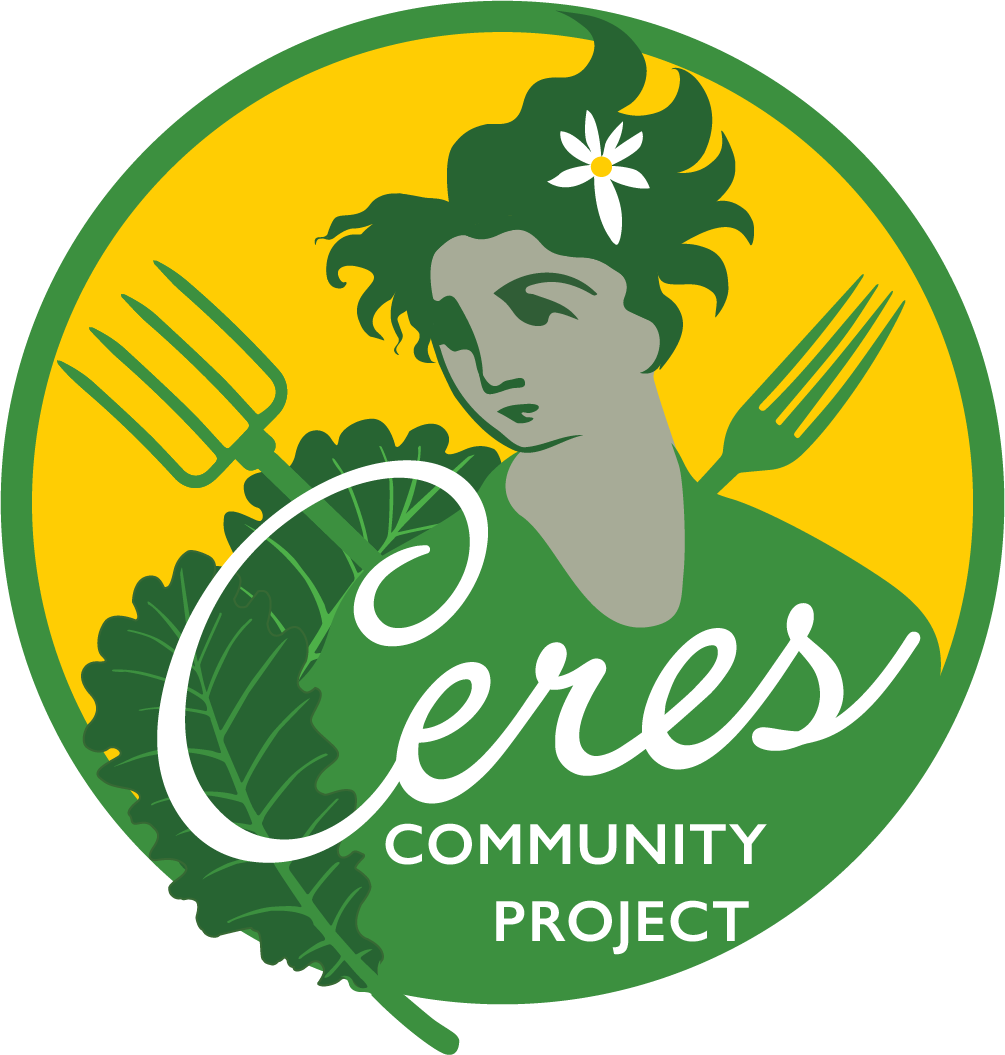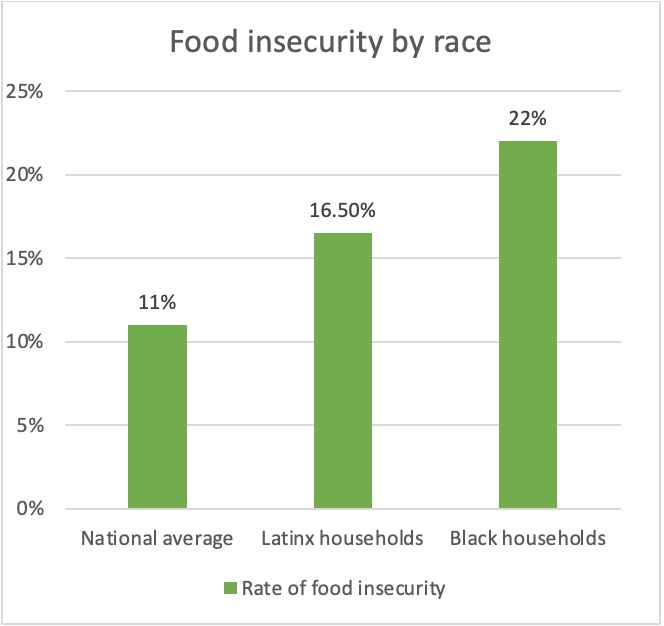Hunger is an Equity Issue
Dear Friend,
Below is our last piece for Hunger Action month! We hope that our first, second and this last article will enrich your understanding of how food and nutrition insecurity is a multifaceted issue that requires investments like living wages, increased access to nutritious food in all neighborhoods, better public transportation, and affordable housing options.
Be well,
Reilly Briggs
Policy Coordinator
From food deserts, to hunger in marginalized communities, hunger is an issue that affects some people more than others.
A food desert is a geographic area that doesn’t have a grocery store carrying a full range of fresh, affordable healthy food options that’s easy and convenient for residents to visit. Due to a legacy of redlining, a historic practice of denying housing to Black, Indigenous, and other people of color (BIPOC) in certain neighborhoods, along with the impacts of continued systemic racism – such as perceived risk, crime rates, and a reluctance to accept SNAP and EBT benefits – communities of color and low-income communities are much more likely to lack convenient access to full scale grocery stores. According to the Food Empowerment Project, this contributes significantly to food and nutrition insecurity, as well as to preventable nutrition-related health conditions. [1] People living in food deserts often must resort to unhealthy, highly-processed foods that can be purchased at convenience stores, or spend precious time traveling to a grocery store, which can be challenging without reliable transportation.
Children and older adults also experience food and nutrition insecurity at higher rates than others. While only 11% of adults between 18 and 59 are food insecure, 25% of children and 12% of older adults suffer from food insecurity. Childhood food insecurity can lead to higher risks for conditions such as asthma and anemia, repeating a grade of elementary school, and developmental impairments. [2] Among older adults, food insecurity results in high rates of malnutrition, high blood pressure, congestive heart failure, and diabetes—all of which can be prevented or improved by good nutrition. [3] We also know that not all calories are created equal—in children, poor nutrition may be linked to ADHD, and among adults, it may be linked to anxiety, depression, and other mental health challenges. [4]
Black and Latinx households experience much higher rates of food insecurity than white households do.
About 11% of households experience food insecurity, yet 16.5% of Latinx households and 22% of Black households experience food insecurity. [5, 6] Factors such as systemic racism in housing and employment practices, educational attainment and quality of available education, mass incarceration, food deserts in communities of color and medical racism, which leads to higher health care costs, leaves less money in the pockets of Black and Latinx people to purchase healthy food.
Food and nutrition security are a part of the fight for equity, and there’s no one-size-fits-all solution. While SNAP and food banks are vital for addressing the urgent impact of food insecurity, they don’t help repair the system that perpetuates it. Community gardens and mobile farmer’s markets, and market match programs that allow SNAP recipients to double their purchases at farmers’ markets are all important strategies for improving access to healthy, fresh food. At the doctor’s office, veggie “prescriptions,” screening for food insecurity, and referral to food and nutrition services are practices that also address food insecurity and inequity. Ceres is also working to integrate a wide range of services – from veggie “prescriptions” to medically tailored meals – into our health care system. Doctors’ ability to prescribe healthy food that’s covered by a patient’s health insurance will go a long way to addressing the equity issues around healthy food access.
We also know that putting an end to food insecurity requires going “upstream” to advocate for things like living wages, increased access to nutritious food in all neighborhoods, better public transportation, and affordable housing options. Policies and practices that address these issues provide the opportunity people need to support the health and wellbeing of their families. At Ceres Community Project, we’re committed to building a healthy, just, and sustainable food system that works for all—not for some.
What You Can Do
Explore food deserts locally using this interactive map
Compare maps: 1930s redlined map vs a current community's Social Vulnerability Index (SVI) score by the CDC across 200 US cities.
Learn about Ron Finely, renegade community garden activist
References
Food Deserts, Food Empowerment Project
Hunger deprives our kids of more than just food, Feeding America
Hunger is a Health Issue for Older Adults: Food Security, Health, and the Federal Nutrition Programs, Food, Research & Action Center
The link between food and mental health, American Psychological Association
Hunger is a Racial Equity Issue, Move for Hunger
Coronavirus Is Worsening Food Insecurity for Latino, Other Families, Salud America!


